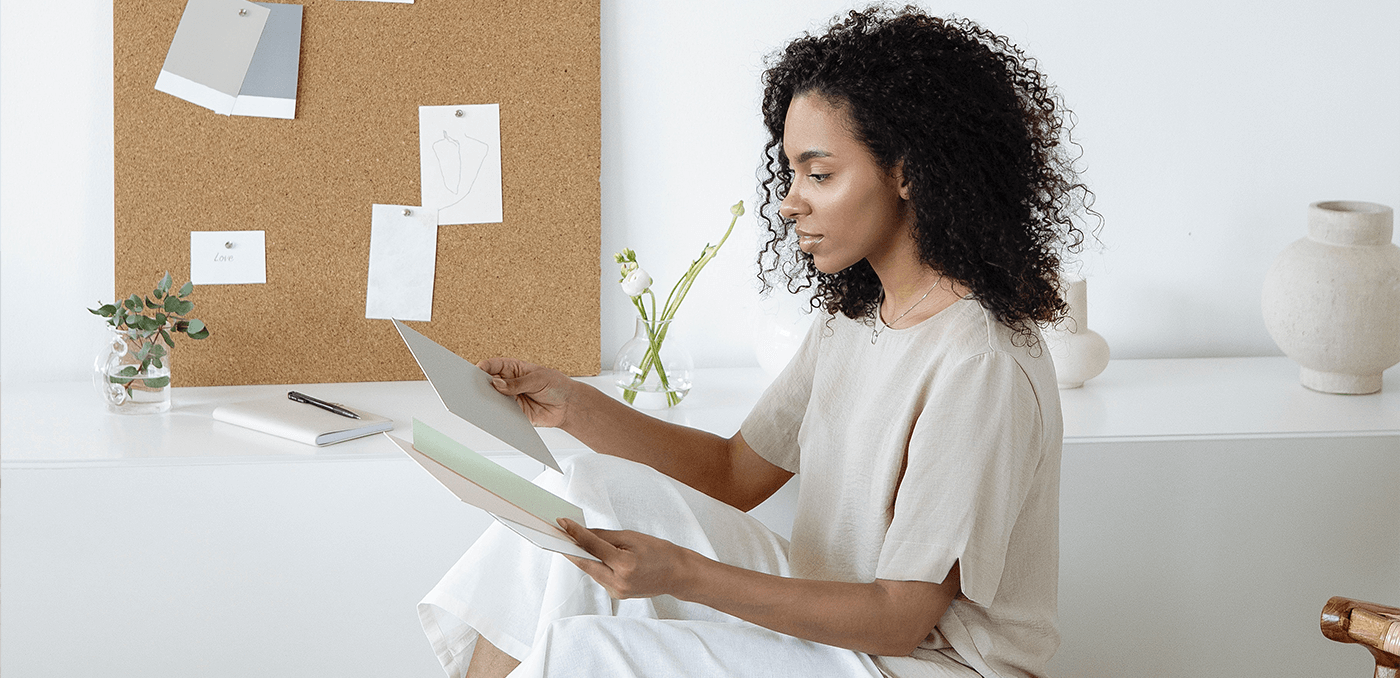
Accounting tips for freelance creatives
If you’re starting work as a freelance creative but aren’t sure about doing your accounting then you’re in the right place. Find out what you need to know, from registering with HMRC to day-to-day accounting tasks.
Make sure you’re registered with HMRC
Registering with HMRC is the first step to working as a freelance creative. Whether you register as a sole trader or limited company is your choice, but either way you need to tell HMRC that you’re working for yourself.
Once you register with HMRC you’ll be able to submit your Self Assessment tax return and pay your taxes.
Have separate business and bank accounts
While it’s tempting to keep one bank account for both personal use and your business, it’s best practice to have two separate accounts. It will make it easier to keep business and personal expenses separate so they’re easy to identify when it comes to recording them in your accounting.
Record your transactions
When you do your accounting it’s important to record every work-related transaction, both money coming in and money going out.
The easiest way to record your transactions is by using an accounting software that has bank feeds. Online accounting software means all your bookkeeping, invoicing and expenses will be in the same place, so it’s easy to keep track of your finances.
Bank feeds automatically import your bank transactions to your accounting software, so all you have to do is record them. If you have a separate business account, it’s really easy to see all your transactions.
Recording transactions with accounting software is a great way to keep track of all your expenses. If you record them regularly, everything will be ready for your Self Assessment tax return with no last minute stress.
Upload receipts
It’s important to keep records of your finances, and that includes receipts. While you don’t have to submit them with your Self Assessment tax return, you do have to have a copy of them in case HMRC requests them.
You don’t have to keep paper copies of the receipts as uploading them online is acceptable! Make sure to upload receipts to your accounting software and attach them to your transactions. You can either use a receipt capture app on the go, or upload a picture with your computer.
Know what are allowable expenses
Allowable expenses are what you can claim back on your tax return. They apply to business expenses only, not anything for personal use. However, if you do have some expenses that apply to both, like a home office or technology then you can split the cost depending on usage.
Here’s what you can claim as allowable expenses:
- Office costs
- Travel costs
- Clothing
- Staff costs
- Reselling goods
- Legal and financial costs
- Advertising, marketing and entertainment
- Training courses
There are some exceptions to this list, so it’s important to know what you can and can’t claim. Check out our guide to allowable expenses to find out more.
Send quotes and invoices
Sending quotes before you send an invoice means you and your client can formally agree on a price before you start work. There are added benefits to sending quotes too!
When you use an integrated invoicing software to send quotes, it’s really simple to create an invoice from the quote. The whole process runs smoothly and you can easily see which quotes and invoices are outstanding.
When it comes to recording your payment in your accounting it only takes a few clicks to get it right.
Prepare for your Self Assessment tax return
Submitting your Self Assessment tax return for the first time can seem daunting, but it doesn’t need to be.
Accounting software with automated reporting can make it easy. Your Profit and loss report has all the information you need to fill in the figures on your tax return. When you do your accounting regularly, everything will be ready for you to submit your tax return. Find out more about how to prepare for your Self Assessment tax return here.
Do your accounting with Bokio
Bokio accounting software has everything you need to keep track of your finances. We have features like bank feeds, a receipt capture app, integrated invoicing and more!
Doing your accounting with Bokio is simple. We take you through the process step-by-step using smart accounting templates so you can record your transactions in the right accounts.
If you work with an accountant you can invite them to collaborate with you in Bokio.

